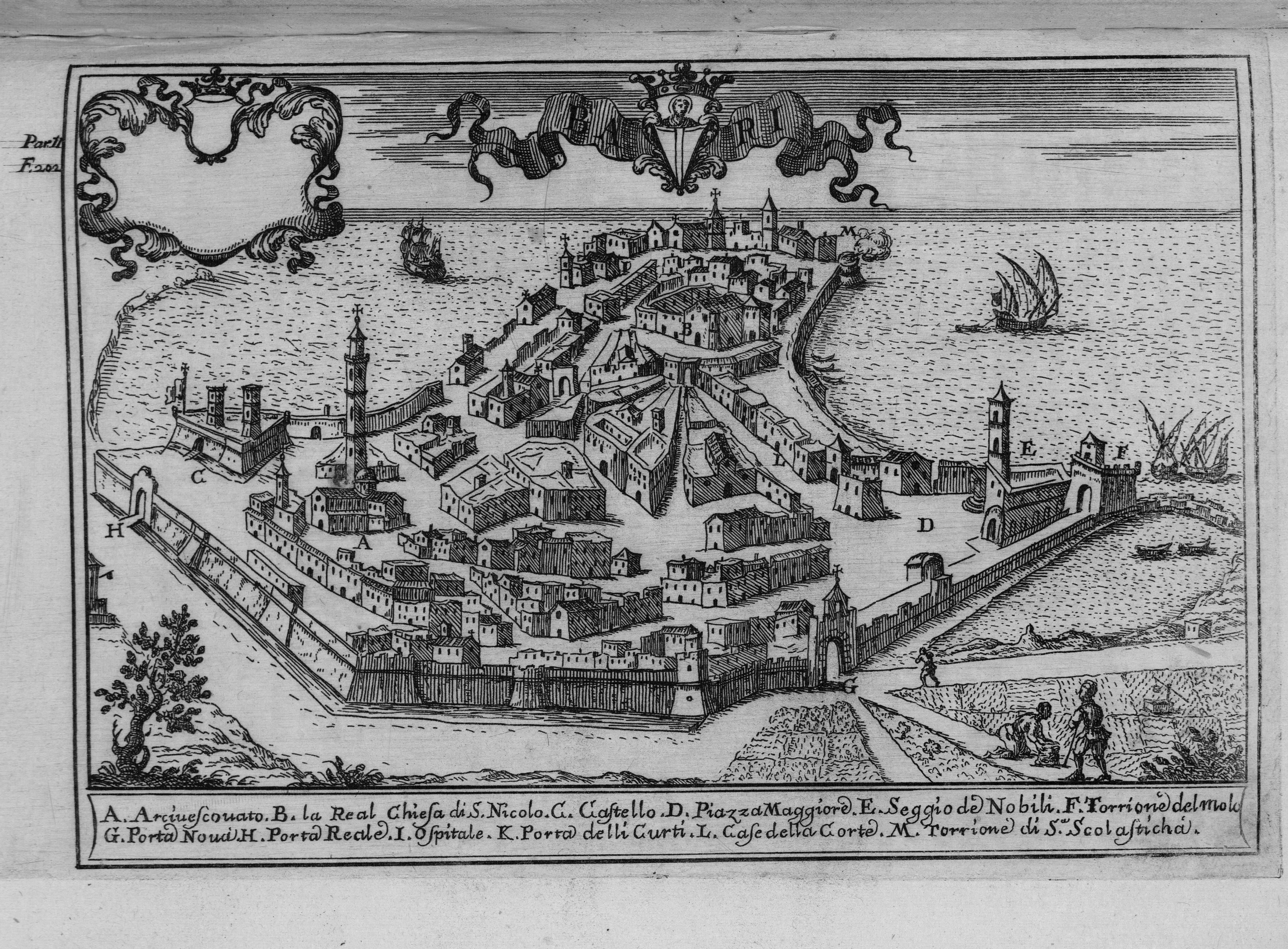Bari seems to consist of two different urban settlements, almost juxtaposed, to which a third settlement was added in the second half of the twentieth century. Three towns in one, three different cultures, and three different stages of history. Moving from the sea to the country, the old town is first observable, extended over a natural peninsula and once surrounded with massive walls.

Bari, Il Regno di Napoli in prospettiva, by G. B. Pacichelli, 1703
(Fondo Antiguo de la Biblioteca de la Universidad de Sevilla from Sevilla, España – “Bari”, CC BY 2.0, https://commons.wikimedia.org/w/index.php?curid=51281654)
The old town, whose plan recalls the Mediterranean East, is a maze of alleys and houses, close to each other, contained within the two architectural and symbolic poles of the Medieval town: the castle and the basilica. Between the two poles, a story covering nearly three thousand years unfolds, made up of mosaics, churches, niches, confraternities, noble palaces, arches and courtyards that suddenly open behind corners which could seem blind to the enchanted traveler.
The second town, known as centro murattiano (Murat district), is juxtaposed to this old town, “Bari Vecchia”.
There is no real boundary: the two towns met once the medieval walls were demolished, but never merged or blended. One single broad street – Corso Vittorio Emanuele – divides these two urban settlements; crossing it, we leave the quasba and the Middle Ages behind and walk into the Murat district, characterized by elegant nineteenth-century plans. This second town, which extends up to the railway, is a simple parallelepiped, within which the streets are arranged in a grid plan. The perpendicular roads have a south-north direction. The sea in Bari is in the north, hence walking along the center, it seems that all streets stretch to the sea, reaching the horizon, where the blue sea meets the sky. Conversely, the parallel roads have an east-west direction.
Behind the Murat district, the railway, which runs parallel to the sea, marks the start of the third Bari, the modern and contemporary one, where both elegant residential areas and popular outskirts grew. Here, the town points to the hinterland, almost vanishing towards the Apulian country.
References: F. Falagna, Bari città vetrina, in Viaggio in provincia, ed. by E. Angiuli, Biblos Edizioni, Cittadella di Padova 1991, p.406.
